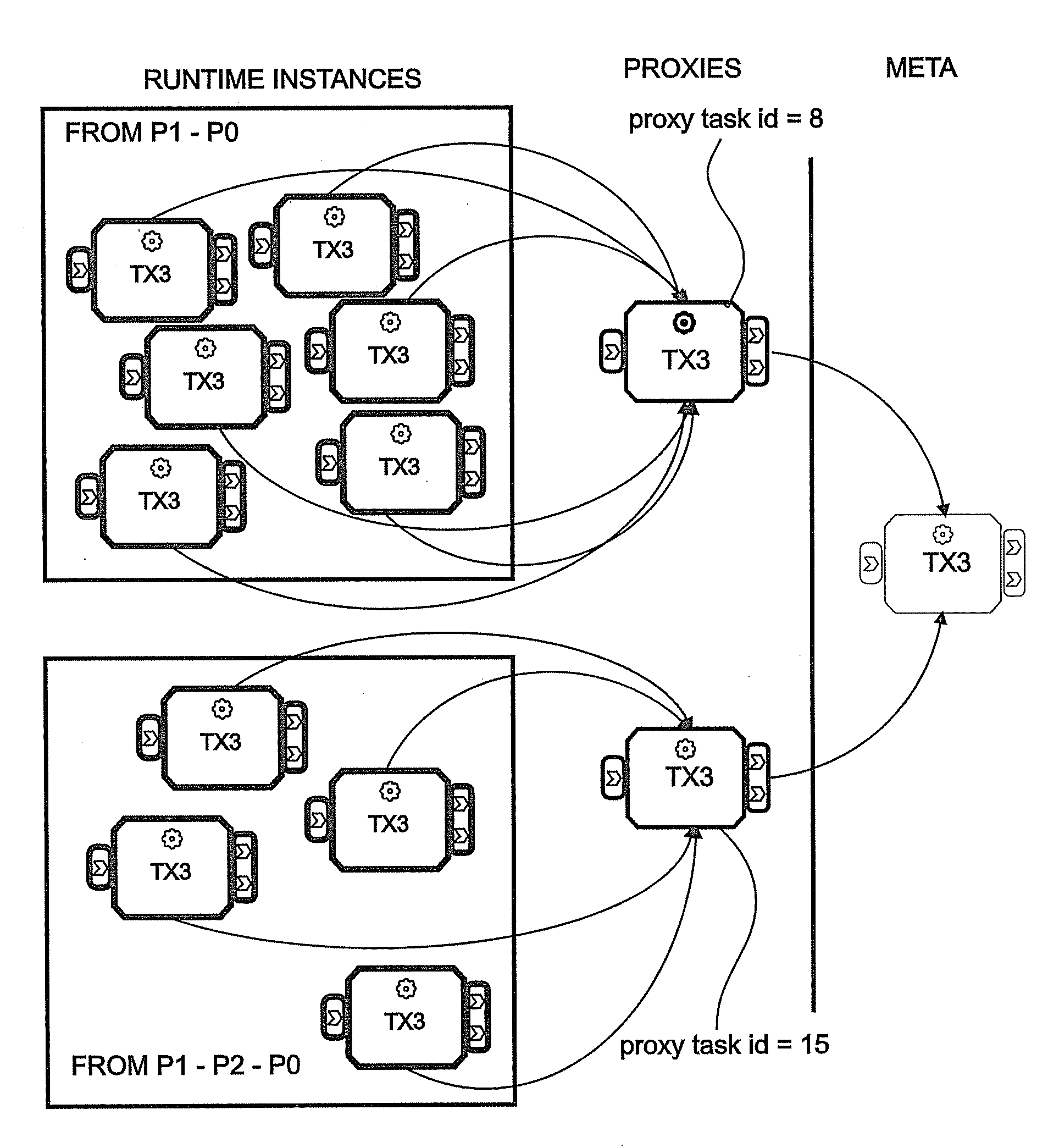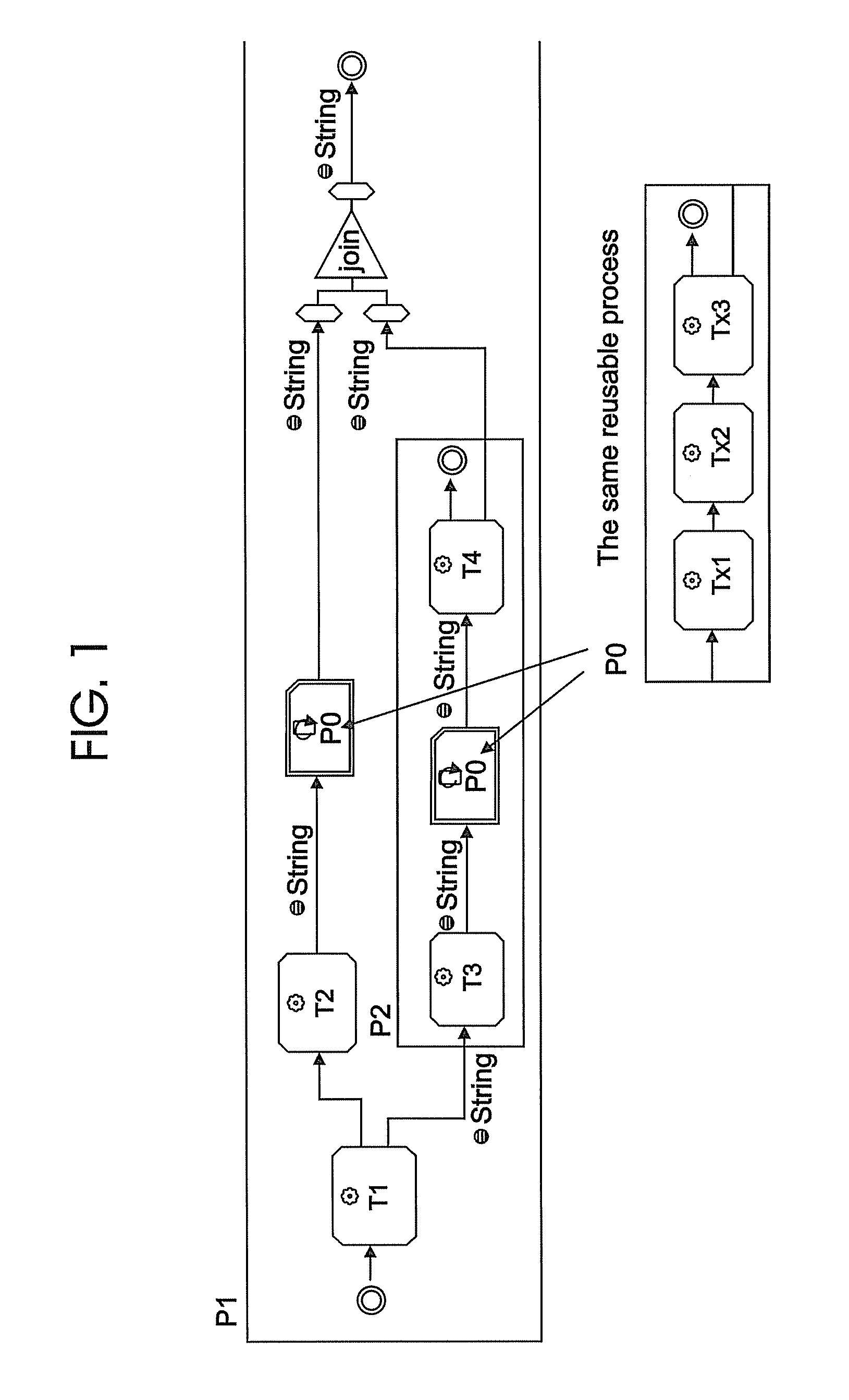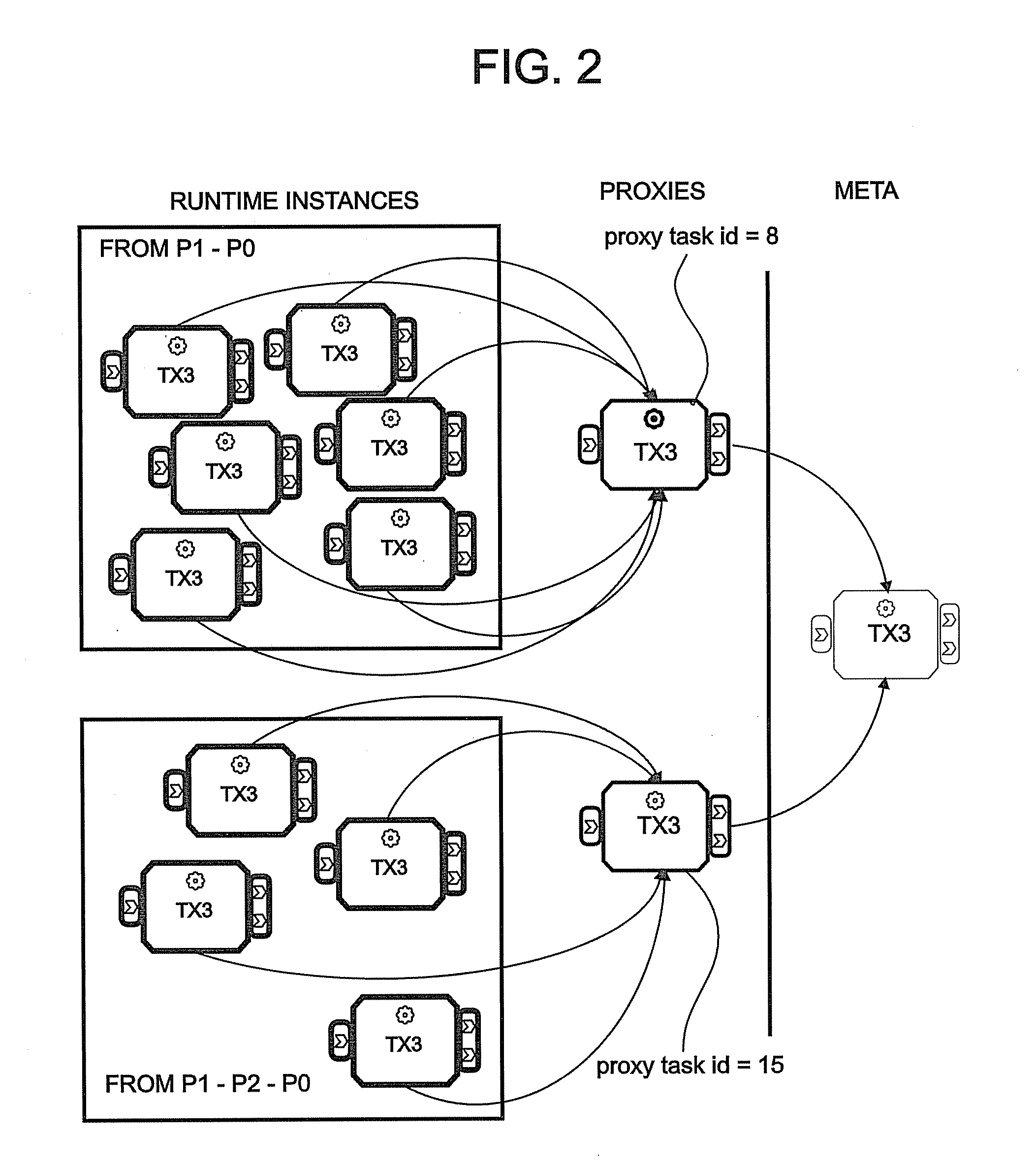Method, system and computer program product for analysis of simulation results
- Summary
- Abstract
- Description
- Claims
- Application Information
AI Technical Summary
Benefits of technology
Problems solved by technology
Method used
Image
Examples
Embodiment Construction
[0019]Embodiments of the invention relate to simulation of processes and analysis of simulation results. The simulation is typically executed on a general-purpose computer executing a computer program in response to code stored on a computer program product. The code includes instructions enabling the computer to perform the functions described herein.
[0020]The following illustrates some advantages of using model-element-proxies in the implementation where RDBMS is employed as a simulation results persistence mechanism with SQL used as a query language. The given example deals with calculation of aggregated cost values which is just one of possible applications. Conceptually, the same advantages (i.e., elimination of recursion or some expensive pre-processing) are to be realized regardless of persistence mechanism or query method.
[0021]The following example illustrates the example's model structure without using a diagram. The containment hierarchy of the model of FIG. 1 may be repr...
PUM
 Login to view more
Login to view more Abstract
Description
Claims
Application Information
 Login to view more
Login to view more - R&D Engineer
- R&D Manager
- IP Professional
- Industry Leading Data Capabilities
- Powerful AI technology
- Patent DNA Extraction
Browse by: Latest US Patents, China's latest patents, Technical Efficacy Thesaurus, Application Domain, Technology Topic.
© 2024 PatSnap. All rights reserved.Legal|Privacy policy|Modern Slavery Act Transparency Statement|Sitemap



